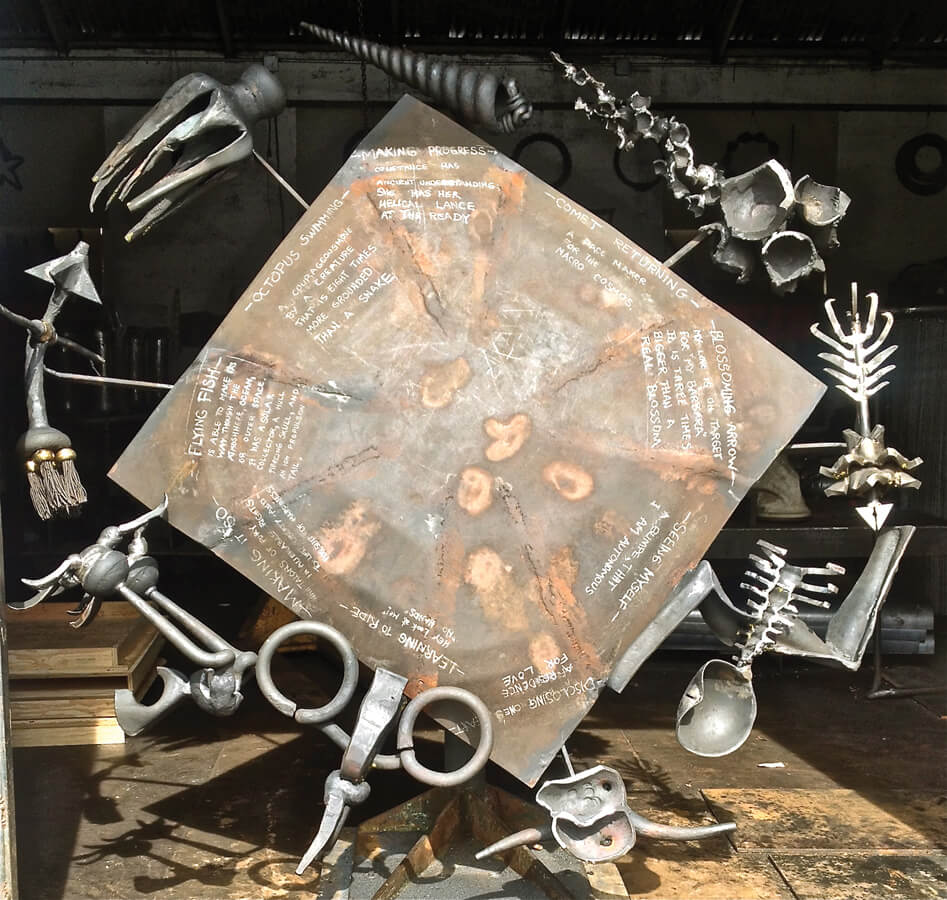In his 2009 article about Garvey’s Objects for Personal Ceremony, art historian and author Roger Lipsey notes, “We are perceiving a fully contemporary work of art—something new and uplifting, but also touching and fun—that has hidden roots in two worlds: the fiercely brilliant, idiosyncratic Modernism of Duchamp but also the steady tradition of Christian pictorial narrative. In holding up these two mirrors to James Garvey’s Objects for Personal Ceremony, we may well be reflecting something of the light that fills him.” There have been three one-man shows of Mr. Garvey’s drawings and sculpture at art centers in his community. He has realized twelve installations that have been approved as permanent works of art by the New York City Arts Commission.
James Garvey was a pupil of Louise March, Sherri Smith, Mark DiSuvero, Roger Lipsey and, Kenneth Hendry. He has a B.F.A. from Colorado State University, and for ten years, he was head of blacksmithing at the Rochester Folk Art Guild. Commissions of his work include MTA Percent for Art works at two subway stations, the “School of Spirits” entrance at the Dwight School, Lariat Street Furniture for Coenties Slip Park in Lower Manhattan, Urban Monks Gates and fixtures for Crosby Hotel, Lariat Street Furniture for DeLury Triangle, and the artwork for Ogilvy & Mather. Mr. Garvey developed the method used to replicate most of the 1,600 armature bars of the Statue of Liberty. He conceived and directed a training program with twenty-five youths from Crown Heights to remake the National Historic Fence at St. Ann’s Church.
Monumental sculptor Mark di Suvero states that Mr. Garvey is a “master of the forge” whose “knowledge and control of the media is brilliant.” He has over one hundred thousand hours forging and fabricating with an open-hearth forge. There is keen insight to recognize original ideas, to anticipate problems, and manage the activity. Mr. Garvey empowers students to prospect for ideas, delivering in James Garvey, Vector Forging, 2015, revolving steel sculpture their own work objects to which Lipsey refers as “idiosyncratic, essential experiences.” Articles about Mr. Garvey’s work have appeared in more than twenty-five publications, among them: The New York Times, Wall St. Journal, The New Yorker, Metropolis, American Artist, American Craft, Anvil’s Ring, and Artist Blacksmith, the magazine of BABA (the British Artist Blacksmiths Association).
.png)

.svg)
.svg)
.svg)
.svg)
.svg)
.svg)
.svg)
.svg)
.svg)
.svg)

%20(1)-svg%20(1).svg)